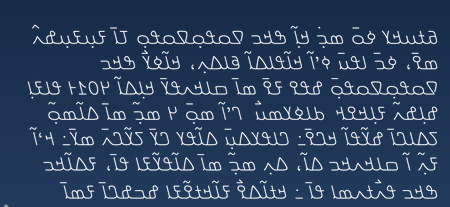If this script runs right-to-left, are there any issues when handling that? Is bidirectional text adequately supported? What about numbers and expressions? Do the Unicode bidi controls and HTML markup provide the support needed? Is isolation of directional runs problematic? See available information or check for currently needed data.
#16 Base direction needed for string data
This issue is common to all RTL scripts.
When strings are passed around, some applications don't receive or use information about the appropriate base direction to use for those strings when they are rendered as part of a page.
This can lead to text being incorrectly aligned, and to text within a sentence or paragraph being incorrectly ordered. Some of this can be addressed by using heuristics to detect the direction first-strongly directional character in the string, but some strings can fail such heuristics.
For more details, see this GitHub issue, which is being used to track this gap.
This issue is common to all RTL scripts.
For support of bidirectional text in plain text, the Unicode Standard provides a number of formatting characters, which include RLI, LRI, PDI and FSI. See an explanation of how these work.
Note that the Unicode Standard recommends the use of RLI/LRI...PDI rather than the former RLE/LRE...PDF, because the newer code points directionally isolate the text they surround from that around it. This is important for producing bidirectional text.
Although markup should be used most of the time in HTML pages, there are parts of an HTML document that don't support markup, such as the title element and title, alt, and other attributes. These characters can be necessary for managing inline runs of such text.
Specs:
This is an issue related to Unicode support, rather than W3C specs.
html mentions that text content may contain these characters.
Tests & results:
i18n test suite, Isolating formatting characters
Gecko and Blink support these characters. Webkit doesn't.
Browser bug reports:
Webkit (2014)
Priority:
These characters control fundamental behaviours for support of RTL scripts.
#8 Logical CSS keyword support needed
This issue is common to all RTL scripts.
Adoption of logical keywords such as -start and -end, rather than -left and -right needs to be completed.
For margins, padding, block size, border colour, width & style, logical keywords such as margin-inline-start or margin-block-end are widely supported by major browsers in their simplest forms (such as those just mentioned). However, logical properties are not well supported in shorthands such as margin-block or margin-inline or the margin property. The lack of support for shorthands is significant, since they are expected to have high use.
For more details, see this GitHub issue, which is being used to track this gap.






